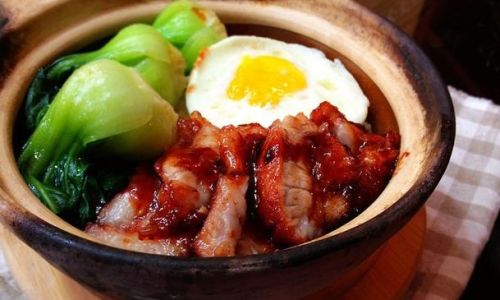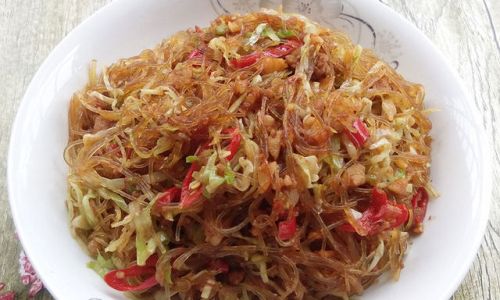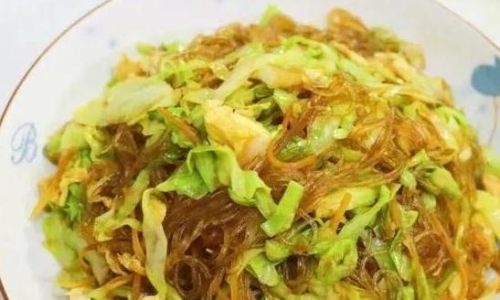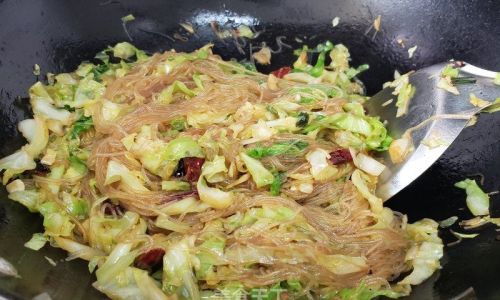Table of content
Clay pot rice, known as 煲仔饭 (bāo zǎi fàn) in Cantonese, is a beloved dish deeply rooted in Chinese culinary tradition. This humble yet flavorful meal combines aromatic rice, savory proteins, and crispy, golden rice crust, all cooked to perfection in a clay pot. While it may seem simple, mastering the art of clay pot rice requires precision, patience, and an understanding of traditional techniques. In this comprehensive guide, we’ll explore the history, ingredients, step-by-step cooking process, and expert tips to help you recreate this iconic dish in your own kitchen.
The Cultural Significance of Clay Pot Rice
Clay pot rice has been a staple in Southern China for centuries, particularly in Guangdong province. Its name, 煲仔饭, literally translates to “small pot rice,” referencing the traditional clay pots used for cooking. These pots, made from porous clay, distribute heat evenly and retain moisture, creating a unique texture that modern cookware struggles to replicate. The dish’s popularity stems from its simplicity and versatility—it can be customized with endless protein and vegetable combinations, making it a comforting meal for any occasion.

Essential Ingredients and Tools
Before diving into the cooking process, gather the following ingredients and tools:
Ingredients
- Rice: Short-grain rice, such as jasmine or Thai fragrant rice, is ideal. Its starchy texture ensures fluffy grains with a slight chew.
- Protein: Popular choices include Chinese sausage (lap cheong), marinated chicken, beef, or pork. For a vegetarian twist, use tofu or mushrooms.
- Aromatics: Fresh ginger, garlic, and scallions elevate the dish’s flavor profile.
- Vegetables: Leafy greens like bok choy or gai lan add freshness.
- Sauces and Seasonings: Soy sauce, oyster sauce, sesame oil, and white pepper are essential for marinades and glazes.
- Broth: Chicken or vegetable broth enhances the rice’s savory depth.
- Oil: Peanut or vegetable oil prevents sticking and aids in crisping.
Tools
- Clay Pot: Opt for a traditional Chinese clay pot (砂锅, shā guō) with a lid. These pots are designed to withstand high heat and develop a non-stick patina over time.
- Stove: A gas stove is preferable for precise heat control, but electric or induction stoves work with adjustments.
- Tongs and Spatula: For handling the hot clay pot and fluffing the rice.
- Basting Brush: Useful for evenly applying marinades.
Step-by-Step Cooking Process
Preparing the Clay Pot
- Seasoning the Pot: If using a new clay pot, soak it in water for 2–3 hours to prevent cracking. Rub the interior with oil and bake it in a 300°F (150°C) oven for 1 hour to create a natural non-stick surface.
- Preheating: Place the empty clay pot on the stove over medium heat for 5 minutes to ensure even cooking.
Soaking the Rice
- Rinse 1.5 cups of rice under cold water until the water runs clear. Soak the rice for 30 minutes to reduce cooking time and ensure even texture.
Cooking the Rice Base
- Heat the Pot: Add 1 tablespoon of oil to the preheated clay pot and swirl to coat the bottom.
- Add Rice and Broth: Drain the soaked rice and add it to the pot. Pour in 1.75 cups of chicken broth (or water) and stir gently.
- Initial Cooking: Increase the heat to high and bring the liquid to a boil. Once boiling, reduce the heat to low, cover, and simmer for 10 minutes. Avoid lifting the lid during this stage.
Adding Protein and Aromatics
- Layer Ingredients: After 10 minutes, arrange sliced Chinese sausage, marinated chicken, or your chosen protein on top of the partially cooked rice. Add thinly sliced ginger and garlic for aroma.
- Create Steam: Tuck 4–5 bok choy leaves around the edges of the pot. The steam from the cooking rice will gently wilt the vegetables.
Achieving the Crispy Rice Crust (Guō Bā)
The prized guō bā (crispy rice) forms during this stage:

- Increase Heat: After 5 minutes, remove the lid and drizzle 1 tablespoon of oil along the pot’s edges. This creates a sizzling effect, crisping the rice.
- Listen for Crackling: As the rice crisps, you’ll hear a faint crackling sound. This indicates the guō bā is forming. Rotate the pot every 2 minutes to ensure even browning.
- Monitor Heat: Adjust the heat to medium-low to prevent burning. Cook for an additional 8–10 minutes.
Preparing the Glaze
While the rice crisps, prepare a flavorful glaze:
- Mix: In a small bowl, combine 2 tablespoons soy sauce, 1 tablespoon oyster sauce, 1 teaspoon sesame oil, 1 teaspoon sugar, and a pinch of white pepper.
- Thicken (Optional): For a richer glaze, dissolve 1 teaspoon of cornstarch in 2 tablespoons of water and whisk into the mixture.
Finishing Touches
- Apply Glaze: Once the rice is cooked, brush the glaze over the protein and rice.
- Garnish: Sprinkle chopped scallions and toasted sesame seeds on top.
- Rest: Let the clay pot rice rest for 5 minutes off the heat. This allows the flavors to meld and the rice to firm up slightly.
Serving Suggestions
Clay pot rice is traditionally served directly in the pot, with diners scooping portions onto their plates. Pair it with:

- Soup: A light clear broth, such as wonton or egg drop soup.
- Pickled Vegetables: Tangy pickled daikon or cucumbers cut through the richness.
- Tea: Jasmine or chrysanthemum tea complements the dish’s flavors.
Expert Tips for Perfect Clay Pot Rice
- Rice Ratio: Use a 1:1.15 rice-to-liquid ratio for fluffy, not mushy, grains.
- Heat Control: Mastering the stove’s temperature is crucial. High heat for boiling, low heat for simmering, and medium-low for crisping.
- Avoid Peeking: Lifting the lid releases steam, disrupting the cooking process.
- Oil Placement: Drizzle oil only on the edges to crisp the rice without making the dish greasy.
- Leftovers: Store leftover rice in an airtight container. Reheat in the clay pot with a splash of water to revive the texture.
Common Mistakes and How to Avoid Them
- Soggy Rice: Ensure the rice is thoroughly drained after soaking and use the correct liquid ratio.
- Burnt Bottom: Never leave the pot unattended during the crisping stage. Rotate frequently and lower the heat if needed.
- Uneven Cooking: Use a heat diffuser if your stove has hot spots.
- Dry Protein: Marinate meats for at least 30 minutes to lock in moisture.
Regional Variations and Creative Twists
Clay pot rice’s adaptability has led to countless regional variations:
- Sichuan Style: Adds spicy bean paste and minced pork for a fiery kick.
- Hong Kong Style: Features salted fish and preserved meats for umami depth.
- Vegetarian: Substitutes protein with king oyster mushrooms and lotus root.
- Seafood: Incorporates shrimp, scallops, and squid for a coastal twist.
Preserving Tradition in Modern Kitchens
While clay pot rice is steeped in tradition, modern cooks can adapt the recipe using:

- Electric Clay Pots: Programmable settings mimic traditional stovetop cooking.
- Instant Pot: Use the “rice” function for the base, then transfer to a broiler for crisping.
- Gluten-Free Options: Replace soy sauce with tamari or coconut aminos.
Conclusion
Clay pot rice is more than a meal—it’s a celebration of craftsmanship and heritage. By mastering the balance of heat, texture, and flavor, you can honor this ancient dish while making it your own. Whether you’re a novice cook or a seasoned chef, the journey to perfecting 煲仔饭 is as rewarding as the final bite. So gather your ingredients, fire up the stove, and let the sizzle of the clay pot transport you to the bustling streets of Guangzhou, one golden grain at a time.





0 comments